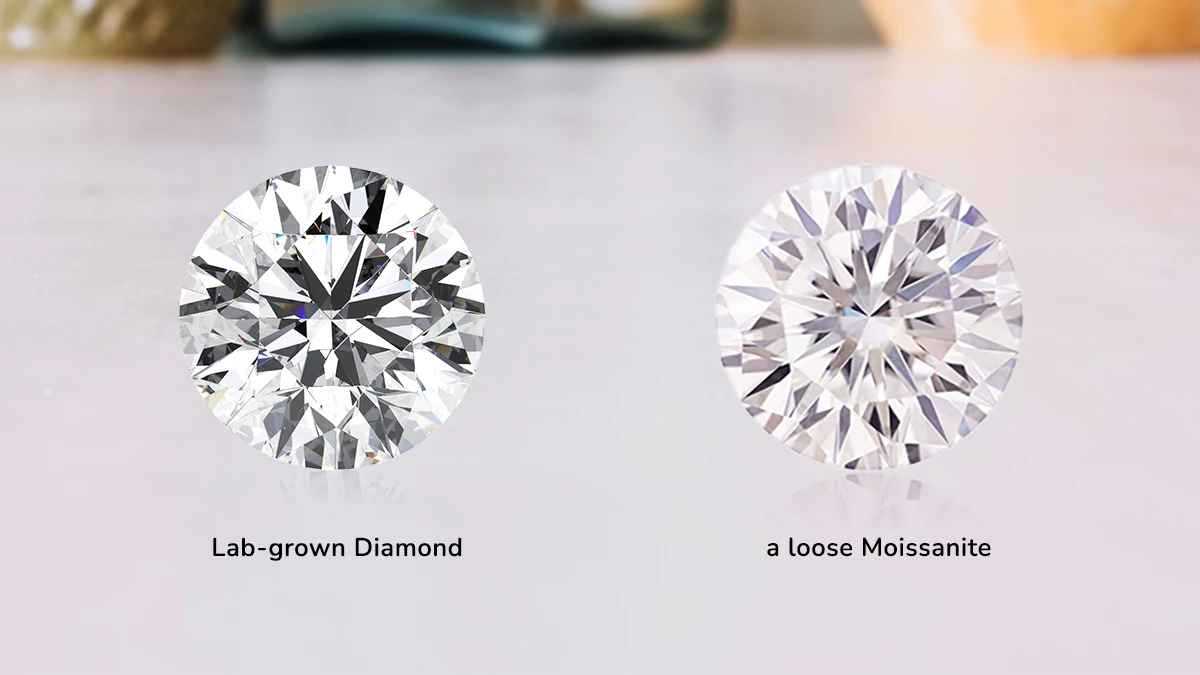When it comes to choosing between diamonds and moissanites, especially lab-grown diamonds, many consumers are left pondering the differences, qualities, and value of each gemstone. As technology advances, more individuals are turning to diamond vs moissanites as a sustainable and affordable alternative to traditional mined diamonds. However, moissanite, though often confused with diamonds, is a gemstone that offers a distinct set of qualities. In this article, we will explore the differences between diamond and moissanite, as well as how lab-grown diamonds fit into the conversation, helping you make an informed decision.
What is a Diamond?
Diamonds have long been regarded as one of the most coveted gemstones in the world. They are natural stones that form deep within the Earth under extreme pressure and heat. These natural diamonds are then extracted from the Earth and cut into various shapes to create jewelry. Traditionally, diamonds are used in engagement rings, necklaces, and other fine jewelry pieces. The allure of diamonds lies in their rarity, beauty, and symbolic value. But as the world shifts towards more sustainable practices, lab-grown diamonds have become a popular choice among consumers.
What is Moissanite?
Moissanite is a gemstone that is often compared to diamonds due to its similar appearance. However, it is made of silicon carbide and was first discovered in a meteorite by chemist Henri Moissan in 1893. While it is not as rare as diamonds, moissanite is still considered a precious stone and is known for its brilliance. Moissanite’s hardness on the Mohs scale is also impressive, ranking just below diamonds, making it a durable option for jewelry. It has a higher refractive index than diamonds, meaning it can sparkle more intensely, which is one of the reasons people often mistake it for a diamond.
Lab-Grown Diamonds: The New Era of Diamond Production
Lab-grown diamonds are synthetic diamonds that are created in a controlled environment using technology that replicates the natural process of diamond formation. There are two primary methods for creating lab-grown diamonds: High Pressure High Temperature (HPHT) and Chemical Vapor Deposition (CVD). Lab-grown diamonds share the same physical, chemical, and optical properties as natural diamonds but are made in a fraction of the time and without the environmental and ethical concerns associated with traditional diamond mining. Many people choose lab-grown diamonds because they offer the same beauty as natural diamonds at a lower price point and with a much smaller carbon footprint.
Diamond vs Moissanites: Key Differences
One of the primary differences between diamonds and moissanites is their composition. Diamonds are made entirely of carbon atoms arranged in a crystal structure, whereas moissanites are made of silicon carbide. While both gemstones are hard and durable, lab grown diamonds score 10 on the Mohs scale of hardness, whereas moissanites score 9.25. This means that diamonds are slightly more resistant to scratches than moissanites.
Another key difference lies in their visual characteristics. Moissanites have a higher refractive index than diamonds, meaning they can reflect more light and sparkle more intensely. Some people appreciate this extra brilliance, while others prefer the more subtle sparkle of a diamond. The fire and dispersion in moissanites can make them appear even more dazzling, which is why some people may confuse them with diamonds at first glance. However, the unique sparkle of a moissanite is an important distinguishing feature.
Lab-Grown Diamonds vs Moissanites: A Price Comparison
When comparing the price of lab-grown diamonds and moissanites, it’s clear that moissanites are significantly more affordable. The price of a moissanite can be up to 90% less than that of a natural diamond, which makes them an attractive option for those seeking a gemstone with similar aesthetic qualities but at a lower price point. Lab-grown diamonds, while less expensive than their mined counterparts, are still more expensive than moissanites. However, lab-grown diamonds have the advantage of being chemically identical to natural diamonds, which makes them a great option for those who want a true diamond experience without the environmental and ethical concerns.
Ethical Considerations: Lab-Grown Diamonds vs Moissanites
Both lab-grown diamonds and moissanites are considered ethical alternatives to traditional mined diamonds. Lab-grown diamonds are produced without the environmental damage caused by mining operations, and they do not contribute to human rights violations that can occur in some mining regions. Moissanites, while not mined, are also a sustainable option since they are produced in laboratories. For environmentally-conscious consumers, both options provide an opportunity to own beautiful gemstones while minimizing their ecological footprint.
Which is the Better Choice for You?
Ultimately, the decision between diamond vs moissanites, and whether to choose a lab-grown diamond, depends on your personal preferences, budget, and values. If you are looking for a gemstone that closely resembles a traditional diamond in terms of composition and long-term value, a lab-grown diamond may be the right choice for you. However, if you are seeking a more affordable gemstone with exceptional brilliance and sparkle, moissanite could be the perfect option. Both gemstones offer beauty and durability, and choosing between them comes down to what matters most to you.
In conclusion, whether you opt for a lab-grown diamond or a moissanite, both offer advantages over mined diamonds in terms of price, sustainability, and ethical considerations. It is essential to weigh these factors carefully and choose the gemstone that aligns with your values and budget. As the world continues to move toward more eco-conscious practices, lab-grown diamonds and moissanites are becoming popular choices for those who want to make a statement without compromising on quality or ethics.

